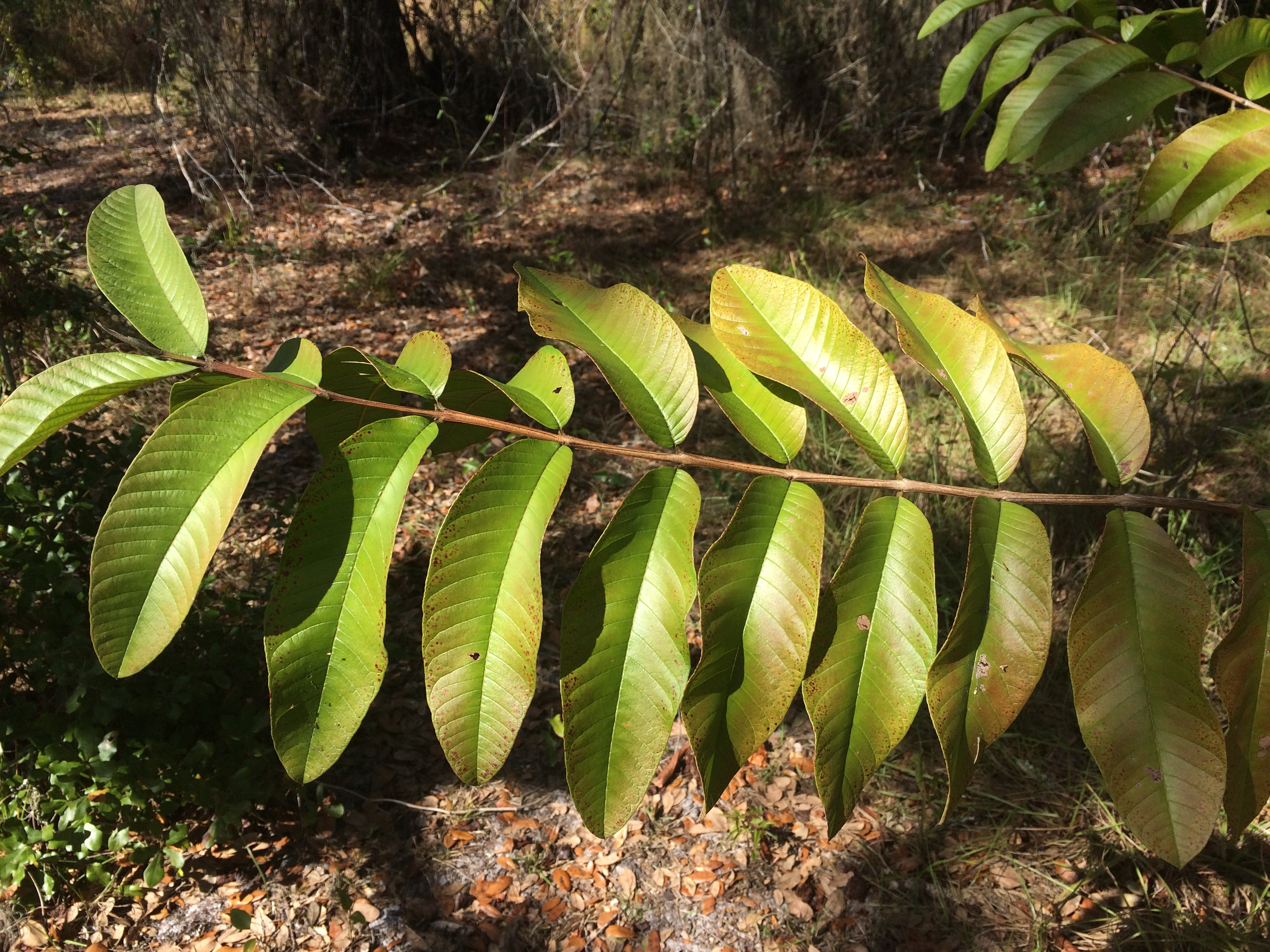Psidium guajava


Common Name: guava
Family: Myrtaceae
Common Synonyms: Guajava pyriformis, Myrtus guajava
USDA Hardiness Zone: 9a-11
Growth Habit: Shrub, Tree
Origin: Mexico, Central and South America
FISC Category: 1
FDACS Listed Noxious Weed: No
Introduction Date: Naturalized by 1765
IFAS Assessment:

Is a shrub or tree that grows up to 9 m high, has greenish-brown bark, and is pubescent. The leaves are opposite and pubescent on the lower leaf surface. The veins are impressed above and conspicuously raised below. The flowers are white and form individually or in a small group on the leaf axil. The fruit is oval shaped, is yellow when mature, and has many seeds.
Hammocks and pinelands, cypress stands, open woodlands and forests. Found in south and central Florida
Planted for edible fruit and as ornament. Also serves as a host for the naturalized Caribbean fruit fly Anastrepha suspensa. Has high fruit set and seed dispersal.

NA
IFAS. 2011. Integrated Management of Nonnative Plants in Natural Areas of Florida. http://edis.ifas.ufl.edu/pdffiles/WG/WG20900.pdf Accessed June 13 2017.
Langeland, K.A., H.M. Cherry, C.M. McCormick, K.C. Burks. 2008. Identification and Biology of Non-Native Plants in Florida's Natural Areas-Second Edition. IFAS Publication SP 257. University of Florida, Gainesville, Florida.
Wunderlin, Richard P., and Bruce F. Hansen. Guide to the Vascular Plants of Florida. 3rd ed. Gainesville, FL: U of Florida, 2011.
